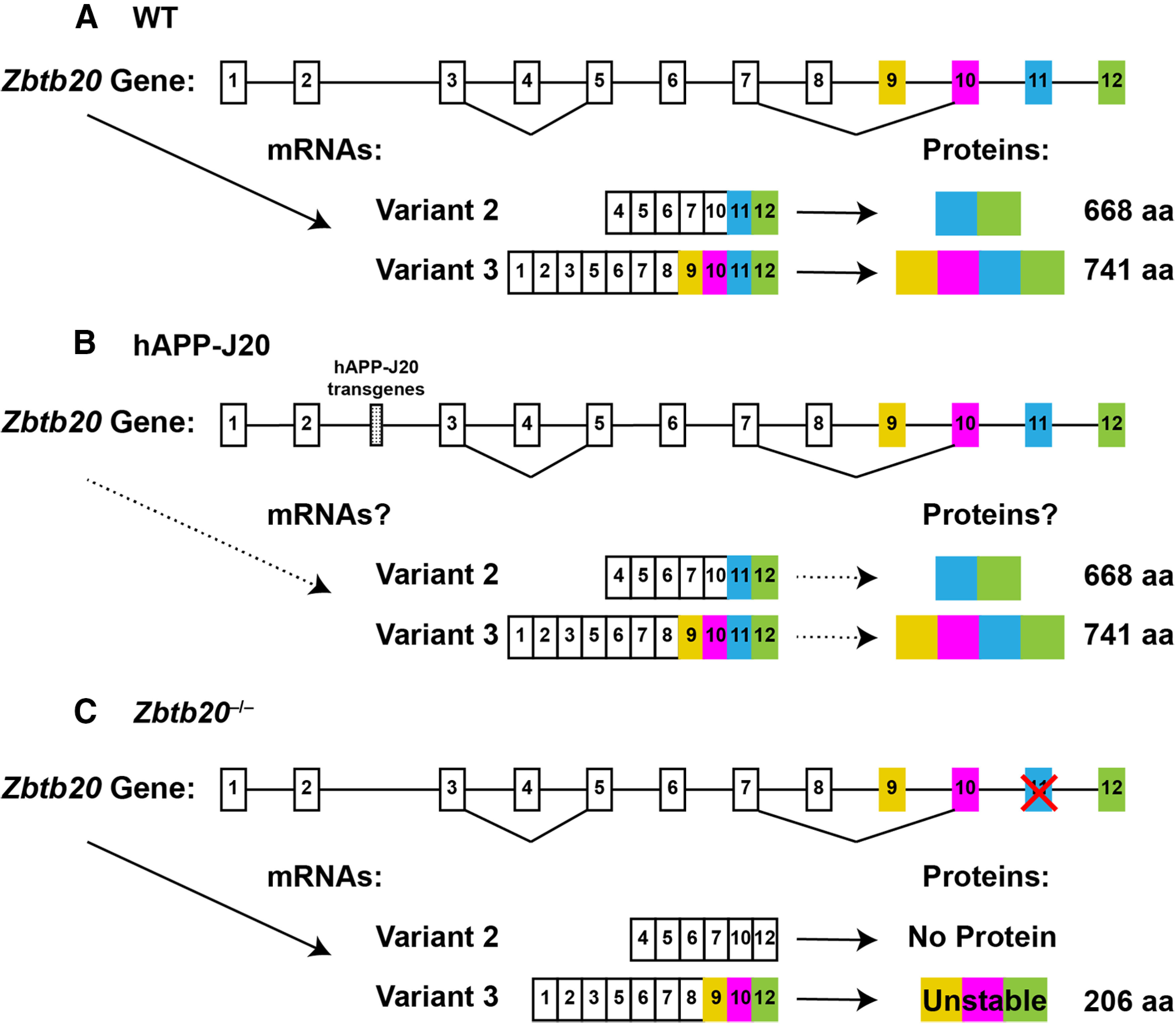Figure 1.

Simplified Zbtb20 gene structure in WT, hAPP-J20, and Zbtb20–/– mice. A–C, Diagrammatic structure of the Zbtb20 gene in WT mice (A), hAPP-J20 mice (B), and Zbtb20–/– mice (C). Note that exons and introns are not drawn to scale and that putative translational start codons are present in exons 9 and 11, but not in exons 1–8 or 10. Translatable protein-coding exons are colored. A, The WT Zbtb20 gene (https://www.ncbi.nlm.nih.gov/gene/56490) has been shown to give rise to multiple alternatively spliced transcripts and two major protein products (668 and 741 amino acids (aa) in length, respectively) in cell lines (Mitchelmore et al., 2002). Examples of two confirmed Zbtb20 mRNA variants and the proteins they encode are shown below. In principle, additional transcripts and protein isoforms might be derived from the Zbtb20 gene in brain tissues (https://www.ncbi.nlm.nih.gov/gene/56490 and Wang et al., 2019). Probes and primers used to quantitate potentially protein-coding Zbtb20 mRNAs by RT-qPCR were designed to detect sequences in exons 10 and 11 (Extended Data Fig. 1-1). B, In hAPP-J20 mice, alternatively spliced minigenes (stippled box) that encode human hAPP695, hAPP751, and hAPP770 and are directed by the PDGF β chain promoter integrated into intron 2 of one endogenous Zbtb20 allele. It is uncertain whether and how this insertional event affects the overall production of Zbtb20 mRNAs and proteins in heterozygous hAPP-J20 transgenic mice whose other Zbtb20 allele is intact. C, In Zbtb20–/– mice, exon 11 was deleted, resulting in removal of ∼ 72% of the protein coding sequence (Sutherland et al., 2009).
